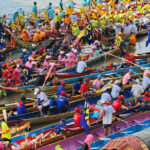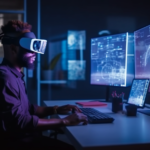The Magic of Movement – Long Exposure Traffic Photography in Bangkok
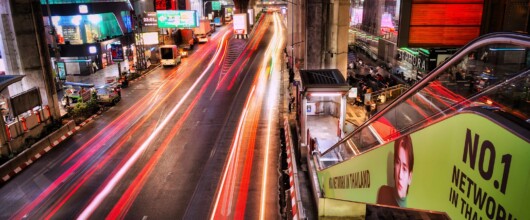
Introduction
Bangkok, the capital city of Thailand, is a vibrant and bustling metropolis that offers an array of unique opportunities for capturing stunning photographs of traffic. Known for its crowded streets and heavy traffic, Bangkok presents a dynamic and ever-changing environment that is perfect for capturing the energy and excitement of the city.
Photography of traffic in Bangkok requires a few essential pieces of equipment, including a tripod and a camera with manual exposure settings. A tripod is crucial for capturing sharp, stable images, particularly during long exposures. Long exposures of several seconds or more can create captivating images that showcase the flow of traffic through the city. A camera with manual exposure settings, such as aperture and shutter speed, allows photographers to adjust the exposure and capture the perfect shot.
One of the unique opportunities for photographing traffic in Bangkok is the city’s famous elevated highways and overpasses. These provide stunning panoramic views of the cityscape and the flow of traffic, allowing photographers to capture the city from a unique perspective. Other locations such as busy intersections, street corners, and bridges over canals offer endless opportunities for capturing the vibrant and dynamic energy of Bangkok’s traffic.
Photographers who are new to the city may find it challenging to navigate the chaotic streets of Bangkok, but this is part of the appeal of capturing the energy of the city through photography. For example, some of the best opportunities for capturing traffic photographs may come from unexpected moments or scenes, such as a tuk-tuk weaving through traffic or a food vendor navigating their way through a busy street.
Whether you are a professional photographer or a hobbyist, capturing stunning photographs of traffic in Bangkok offers an exciting and rewarding opportunity to explore the vibrant energy of the city. With the right equipment, a little patience, and a keen eye for capturing the perfect moment, photographers can create captivating images that showcase the unique charm and beauty of Bangkok.
Selecting the location
Selecting the perfect location is crucial when it comes to capturing stunning photographs of traffic in Bangkok. One of the best locations for capturing this type of photography is a busy intersection or a bridge that overlooks a major highway. These locations provide the perfect vantage point for capturing the flow of traffic and the dynamic energy of the city.
Bangkok’s bustling streets can be overwhelming, and it is essential to find a location that allows for safe photography. When selecting a location, be sure to choose a spot that is not in the middle of the road or obstructing traffic in any way. Always keep safety in mind and be aware of your surroundings, especially when shooting at night.
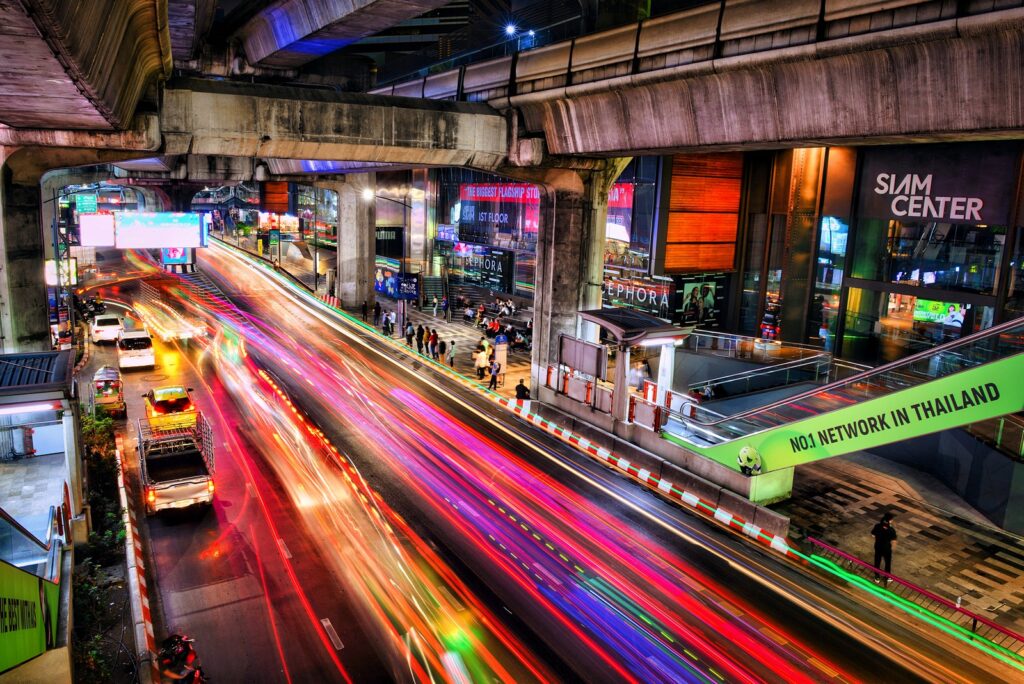
One of the most popular locations for capturing traffic in Bangkok is the Asok-Sukhumvit Intersection. This intersection is known for its impressive traffic flow, with a constant stream of cars, motorbikes, and buses passing through. From the elevated BTS Skytrain station, photographers can capture stunning images of the intersection and the bustling streets below.
But there is more around Sukhumvit Rd:
- Siam Square Intersection: Located in the heart of Bangkok’s shopping district, the Siam Square Intersection is a great location for capturing traffic at night. The intersection is surrounded by high-rise buildings, which create a striking backdrop for photographs.
- Rama I Road: This major road runs through the heart of Bangkok’s commercial district and is known for its busy traffic. Photographers can capture long exposure shots of the stream of cars and motorbikes passing through the area.
- Victory Monument: The Victory Monument is a popular landmark in Bangkok and a major transportation hub. It’s also a great location for capturing traffic, with a constant stream of buses and motorbikes passing through.
- Central World Intersection: The Central World Intersection is located at the heart of Bangkok’s shopping district and is surrounded by high-end malls and luxury hotels. From the elevated pedestrian walkways, photographers can capture stunning images of the intersection and the surrounding area.
Another popular location for capturing traffic in Bangkok is the Rama VIII Bridge, which provides stunning views of the Chao Phraya River and the city’s skyline. The bridge’s unique design and panoramic views make it an ideal location for capturing long-exposure shots of traffic passing by. Photographers can experiment with different camera settings to create captivating images of the cityscape and the flow of traffic below.
The Nonthaburi Bridge is another popular location for capturing traffic in Bangkok. This bridge provides a great vantage point for photographing the Chao Phraya River and the city’s skyline. The bridge’s unique architecture, with its sweeping curves and dramatic lines, creates a stunning backdrop for capturing long-exposure shots of traffic. Photographers can experiment with different camera settings to capture the movement of cars and the city’s lights reflecting off the river.
In addition to these popular locations, photographers can also find opportunities for capturing stunning photographs of traffic in Bangkok by exploring the city’s neighborhoods and backstreets. These areas can provide a unique perspective on the city’s traffic flow and offer a glimpse into the daily life of Bangkok’s residents. Photographers can capture the energy and excitement of the city by photographing the streets and alleys that are off the beaten path.
Setting up the shot
Once you have selected the perfect location for capturing traffic in Bangkok, it is time to set up the shot. This involves adjusting the camera settings and setting up the tripod to ensure that the shot is stable and in focus.
One of the key technical aspects of capturing traffic photography is setting the right shutter speed. The ideal shutter speed for traffic photography is usually a few seconds or longer, which will allow for the car lights to create beautiful trails of light as they pass through the frame. A longer shutter speed can create a more dramatic effect, while a shorter shutter speed can produce sharper, more defined car lights.
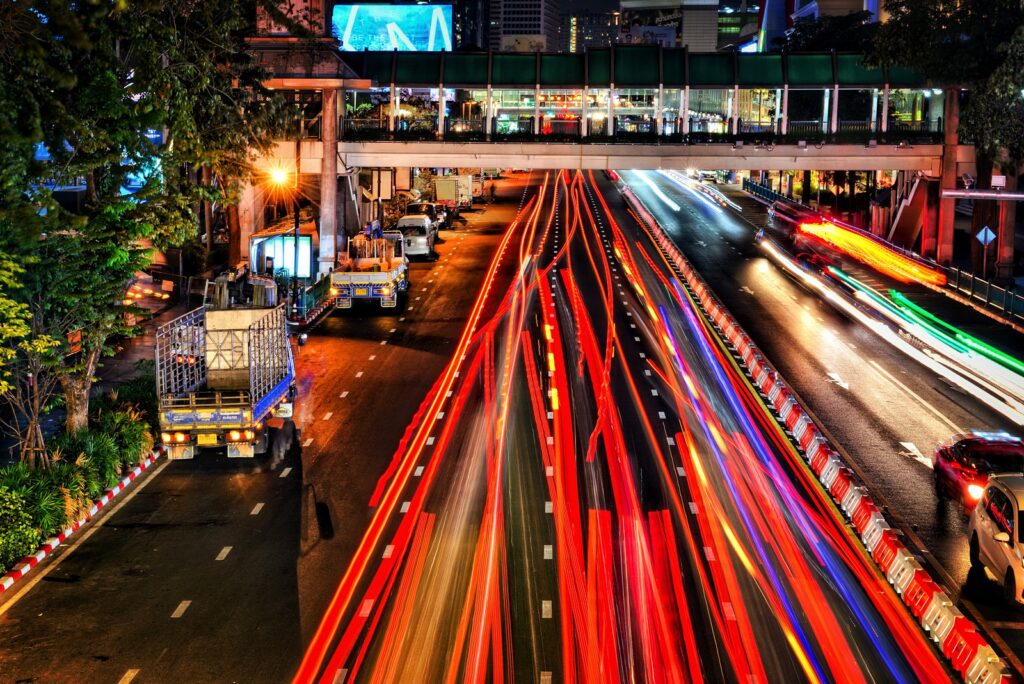
Another important setting to consider when capturing traffic photography is aperture. The aperture controls the depth of field in the shot, which can create different effects depending on the chosen setting. A wide aperture, such as f/2.8, can create a shallow depth of field and blur the background, drawing more attention to the car lights in the foreground. On the other hand, a narrow aperture, such as f/16, can create a deeper depth of field and keep more of the scene in focus.
To ensure that the shot is stable and in focus, it is essential to use a tripod. A sturdy tripod will prevent any camera shake and allow for longer shutter speeds without any blur or distortion. When setting up the tripod, be sure to place it on a stable surface and adjust the height to ensure that the camera is at the desired level.
In addition to the technical aspects of setting up the shot, it is also important to consider the composition of the shot. To create a compelling image, try experimenting with different angles and perspectives. This could involve capturing the shot from a high vantage point or getting closer to the action on the street.
It is also important to pay attention to the foreground and background elements in the shot. These elements can add depth and interest to the image and help to tell a story about the location and the traffic flow. Look for interesting elements, such as buildings, street signs, or people, that can add context and visual interest to the shot.
When capturing traffic photography, it is important to be patient and take multiple shots to ensure that you capture the perfect moment. With the right camera settings, a stable tripod, and a creative eye for composition, you can capture stunning images of the dynamic energy of Bangkok’s traffic flow.
Adding creative elements
Adding creative elements can take your traffic photography to the next level and make it stand out from the crowd. The key to creating a unique and captivating image is to add a personal touch and think outside the box. One way to do this is to include interesting foreground or background elements in your composition. This could be a street sign, a pedestrian walking by, or even a skyscraper in the distance. These elements can add depth and interest to your photograph, making it more dynamic and engaging.
Another creative element to consider is playing with different color temperatures. The natural warm tones of the car lights can create a stunning contrast against the cool blues and purples of the city skyline. Alternatively, you can experiment with different white balance settings to achieve a more dramatic effect. For example, setting the white balance to tungsten can give your image a cool, blue tone, while setting it to daylight can create a warmer, more golden look.
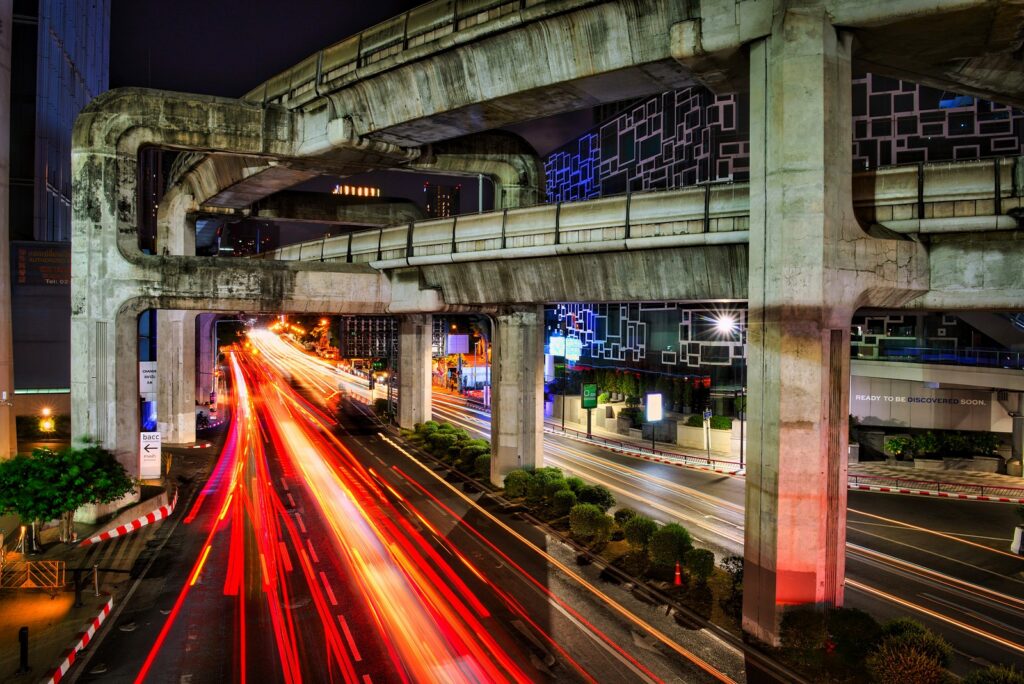
In addition to incorporating creative elements, it’s also important to pay attention to the timing and composition of your shot. Try waiting for a moment when there is less traffic on the road to create a more striking image. This could be during rush hour when the lights are bright, but the roads are congested, or during off-peak hours when there is less traffic and more opportunities for unique compositions.
When composing your shot, consider using the rule of thirds to create a more balanced and visually pleasing image. This involves dividing your frame into thirds both vertically and horizontally and placing your subject at the intersection of these lines. This can create a more dynamic and balanced composition, drawing the viewer’s eye to the most important parts of the image.
Finally, don’t be afraid to experiment and take risks with your traffic photography. Try different angles, perspectives, and settings to create something truly unique and captivating. With a little creativity and some technical know-how, you can create stunning traffic photographs that capture the energy and vibrancy of Bangkok’s bustling streets.
Editing and post-processing
Once you have captured your traffic photographs, the next step is to bring them to life through editing and post-processing. Editing can help to enhance the colors, contrast, and overall impact of your image, taking it to the next level and making it truly stand out.
There are a variety of editing software options available, from basic free software to more advanced programs that require a subscription. Popular options are Adobe Lightroom or Adobe Photoshop, but there is plenty of free software available too. Like open source and free to use is GIMP (GNU Image Manipulation Program). GIMP offers a comprehensive set of editing tools, including color correction, cloning, and masking
When editing your traffic photographs, there are a few basic tips to keep in mind. First, consider adjusting the exposure to ensure that the image is properly balanced and not too bright or too dark. You can also play with the contrast to create a more dynamic and impactful image. Additionally, consider adjusting the highlights and shadows to bring out the details in the brightest and darkest areas of the image.
One important aspect of editing traffic photographs is working with the colors. The colors in your image can greatly affect the overall mood and tone of your photograph. One approach is to use the HSL panel (hue, saturation, and luminance) to adjust the individual colors in the image. For example, you may want to increase the saturation of the red car lights to make them pop, or adjust the hue of the blue sky to create a more dramatic effect.
Another powerful tool for color correction is the white balance adjustment. In most cases, the camera’s automatic white balance setting will be sufficient, but in some cases, it may need to be adjusted to achieve the desired color temperature. For instance, you may want to adjust the white balance towards the blue side of the spectrum to create a cooler, more mysterious atmosphere or towards the yellow side to create a warm, inviting feel.
Beyond color adjustments, there are a few other editing techniques that can help to enhance your traffic photographs. For instance, you can add some sharpening to the image to bring out the details and make the image appear more crisp and clear. You can also apply a vignette to draw the viewer’s eye towards the center of the image and create a more intimate and focused feel.
Another way to add creative flair to your traffic photographs is to experiment with different effects and presets. Many editing software options offer a variety of presets that can quickly transform your image with a few clicks. Alternatively, you can create your own custom presets by adjusting the various settings and saving them for future use.
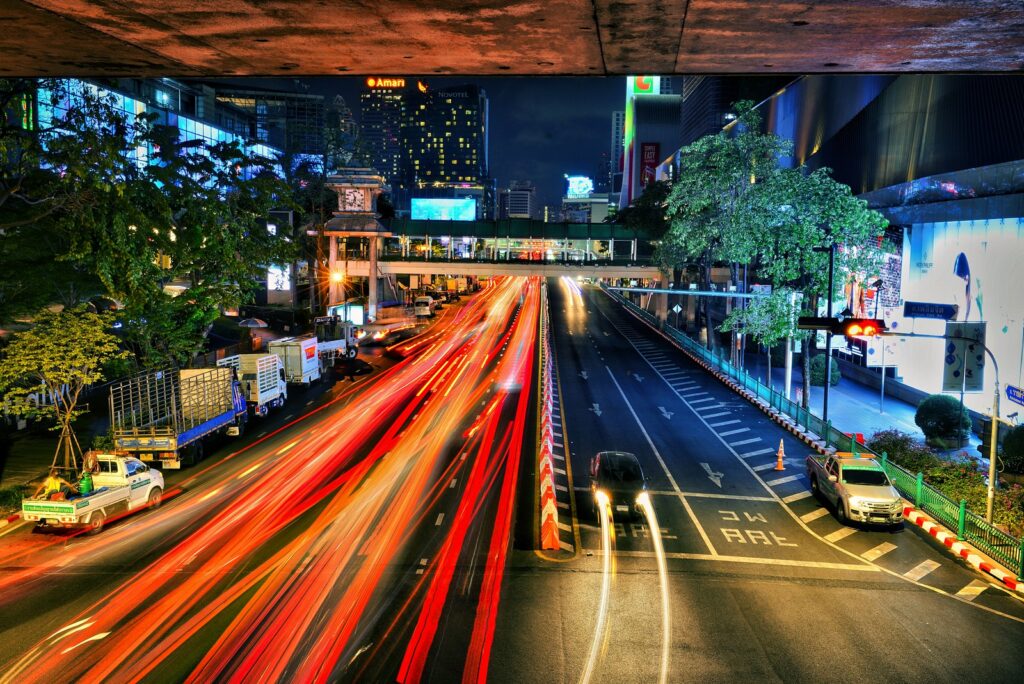
Of course, the key to successful editing is to strike a balance between enhancing the image and maintaining its natural feel. You want your traffic photographs to look great, but you also want them to feel authentic and capture the essence of the scene. Therefore, it’s important to avoid over-processing the image and keep it true to life.
Additionally, keep in mind that editing is subjective and personal. What works for one person may not work for another. Therefore, don’t be afraid to experiment and find your own style and approach to editing. Look at other photographers’ work for inspiration, but don’t try to copy their style exactly. Instead, find ways to make their techniques your own and incorporate them into your own unique style.
Overall, editing and post-processing your traffic photographs is a crucial step in the creative process



